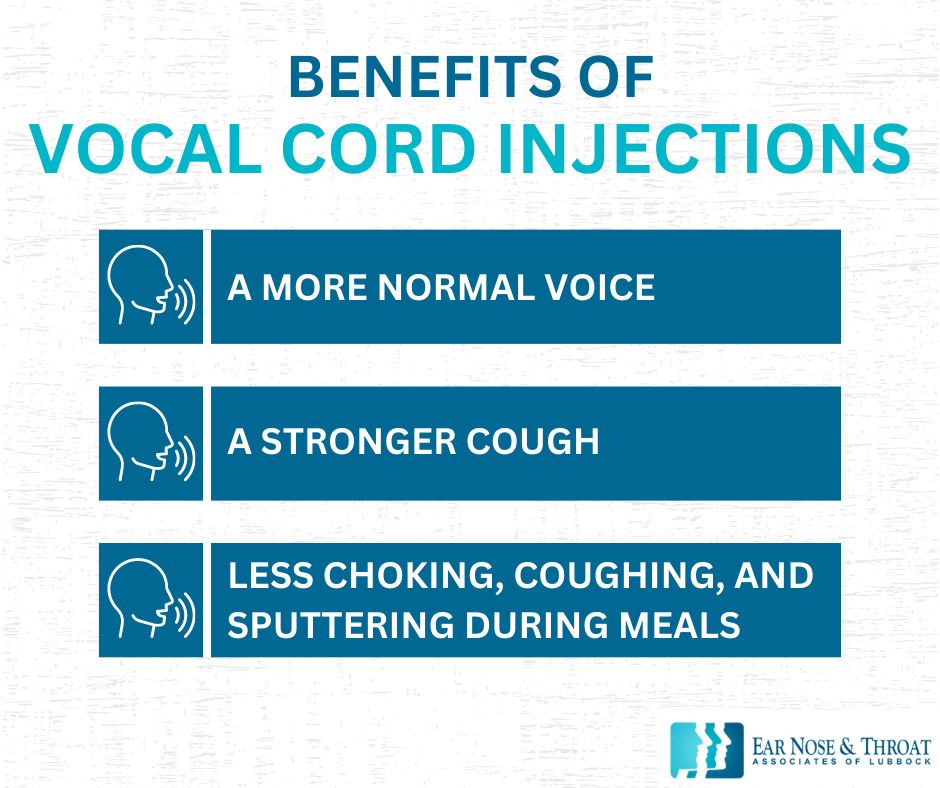Maximizing the Benefits of Vocal Cord Injections: A Comprehensive Guide

If you’ve struggled with a paralyzed or impaired vocal cord, you’re likely familiar with one or all of the unpleasant symptoms: constant breathiness or hoarseness, a weak or quiet voice, and frequent choking or sputtering.
Vocal cord injections could be the safe and effective treatment you need to help with these issues. Here’s what you should know about the procedure.
What Is a Vocal Cord Injection and What Are the Benefits?
The vocal cords are two bands of smooth muscle located inside your voice box (larynx). When you breathe, they open; when you swallow, they close.
When you talk, your vocal cords also close. In this case, air from your lungs passes through them, causing them to vibrate against each other and produce the sound of your voice.
If you have a paralyzed vocal cord or a vocal cord that’s not moving like it should, it can cause a breathy voice, persistent hoarseness, or difficulty swallowing food. These issues can be irritating, and the possibility of aspirating food into your airways and lungs is actually dangerous.
A vocal cord injection can help temporarily alleviate these problems. Like a filler for your face, vocal cord injections add volume to the tissues inside your voice box.
How does this help? If one of your vocal cords isn’t moving when it should be closing, we can inject the area right next to the damaged vocal cord to push it out toward the middle. There, the opposing healthy vocal cord can now reach the damaged vocal cord to close and vibrate against it during swallowing and talking.
Depending on your diagnosis, we might use a short-term filler substance if we suspect the nerve might recover within a few months. Otherwise, we’ll use a long-term filler, which lasts one to two years.
Ultimately, the main benefits of getting a vocal cord injection are:
- A more normal voice
- A stronger cough
- Less choking, coughing, and sputtering during meals

Why Would Someone Need a Vocal Cord Injection?
There are a few reasons why you might experience problems with your vocal cords:
- A medical procedure: Problems with the vocal cords may be iatrogenic, which means a medical procedure unintentionally caused them. For example, surgeries on the spine, neck, or aortic arch can cause nerve damage that may affect vocal cord function.
- Unknown causes: Sometimes, vocal cord dysfunction is idiopathic, meaning doctors don’t exactly know what causes it. It could be due to a viral infection, but often, it’s impossible to know.
How Should I Prepare for a Vocal Cord Injection?
You don’t have to do much to prepare for a vocal cord injection. Once we’ve diagnosed the issue and scheduled the surgery, all you have to do is stock up on soft foods and plenty of fluids. You may have a sore throat for a little while following the procedure, so those will be nice to have on hand.
Otherwise, avoid eating or drinking after midnight the night before the procedure.
What Happens During the Procedure?
Happily, a vocal cord injection is a very quick and straightforward procedure which can be performed in an ambulatory surgery center.
First, you’re put fully to sleep with general anesthesia for the duration of the procedure. As a precaution, we also place a mouth guard to protect your teeth.
Next, we gently insert a hollow metal tube with a light and camera attached (called a laryngoscope) into your throat so we can view your vocal cords. This, together with an operating microscope, gives us a detailed view of the area.
Using a long, thin needle, we then inject filler material into one or two spots next to the malfunctioning vocal cord. The filler will add more volume to the area and push the damaged vocal cord out toward the middle space.
And that’s it! The entire process takes about five to ten minutes. After a short stay in the recovery area, you’re discharged from the surgery center and sent home to relax for the rest of the day.
What Does Recovery After a Vocal Cord Injection Look Like?
After the procedure, we ask you to minimize how much you use your voice for at least two to three days, though you can still speak. You don’t have to reduce or limit your physical activity at all.
It’s common for your voice to feel a little strained or tight after getting a vocal cord injection. However, as the filler evens out in your vocal cords, your voice should begin to sound much stronger, more understandable, and less breathy.
For a final step in the process, your surgeon will want to follow up with you in a few weeks to evaluate your improvement.
Dr. Cuthbertson is a physician at Ear Nose & Throat Associates of Lubbock. He joined the team at ENT Lubbock from Houston, where he was chief resident of the prestigious Bobby R. Alford Department of Otolaryngology at Baylor College of Medicine. He is board certified in Otolaryngology and Head & Neck Surgery and has quickly built a reputation, not only as an extremely skilled surgeon, but as an approachable and compassionate clinician adept in the newest standards and technologies. Learn more about Dr. Cuthbertson.
Categories:








